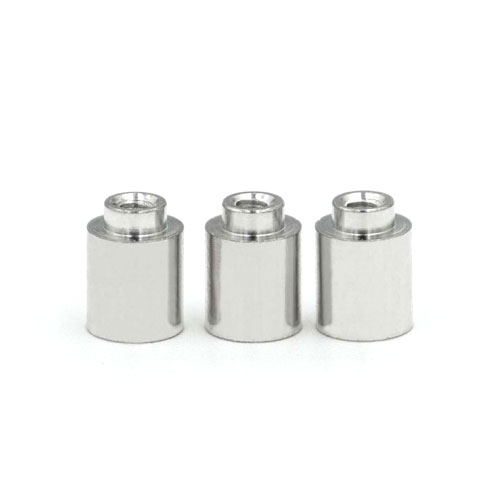Characteristics and Benefits of Tinned SMD Nuts
2024-06-18
A tinned SMD (Surface Mount Device) nut is a specialized hardware component used in electronics for mounting purposes. Here's a detailed overview of its characteristics, uses, and benefits:
Characteristics:
1. Material:
- Typically made from a conductive metal such as brass or steel, which is then coated (tinned) with a layer of tin for improved solderability and corrosion resistance.
2. Surface Mount Design:
- Designed to be mounted directly onto the surface of a printed circuit board (PCB), rather than through holes. This allows for more compact and efficient PCB layouts.
3. Threaded Interior:
- Contains internal threading to allow bolts or screws to be securely fastened.
4. Tinned Coating:
- The tin coating enhances the nut's solderability, ensuring a reliable electrical and mechanical connection to the PCB.
Uses:
1. PCB Mounting:
- Used to secure PCBs within electronic devices, providing mechanical stability and ensuring proper alignment.
2. Component Attachment:
- Facilitates the attachment of various components, such as heat sinks, shields, or other structural elements, to the PCB.
3. Electrical Grounding:
- Can be used to establish electrical grounding points on a PCB, ensuring proper electrical performance and safety.
4. Mechanical Support:
- Provides additional mechanical support to components that may be subjected to physical stress or vibration, enhancing the durability of the device.
Benefits:
1. Improved Solderability:
- The tin coating ensures that the nut can be easily and reliably soldered to the PCB, creating a strong and conductive bond.
2. Corrosion Resistance:
- Tin plating provides a layer of protection against corrosion, extending the lifespan of the component in various environments.
3. Compact Design:
- Being an SMD component, the tinned nut allows for a more compact and streamlined PCB design, which is crucial for modern electronic devices that prioritize space efficiency.
4. Ease of Installation:
- SMD nuts can be quickly and easily placed using automated pick-and-place machines, speeding up the manufacturing process and reducing labor costs.
Installation Process:
1. Placement:
- The SMD nut is placed onto the PCB in the designated location using a pick-and-place machine or manually with precision tweezers.
2. Soldering:
- The nut is soldered to the PCB using reflow soldering, ensuring a secure and conductive connection. The tin coating facilitates the flow of solder and enhances the quality of the joint.
3. Post-Soldering:
- Once soldered, the nut provides a robust anchor point for screws or bolts, allowing for the secure attachment of other components or the PCB itself.
Applications:
1. Consumer Electronics:
- Used in devices such as smartphones, tablets, and laptops where space is limited, and reliable connections are essential.
2. Automotive Electronics:
- Utilized in automotive electronic control units (ECUs) and other in-vehicle systems that require durable and compact mounting solutions.
3. Industrial Equipment:
- Employed in industrial automation and control systems for secure and stable component mounting.
4. Medical Devices:
- Used in medical electronic equipment where reliable performance and durability are critical.
In summary, tinned SMD nuts are essential components in modern electronics, offering reliable solderability, corrosion resistance, and space-saving benefits for a wide range of applications.



